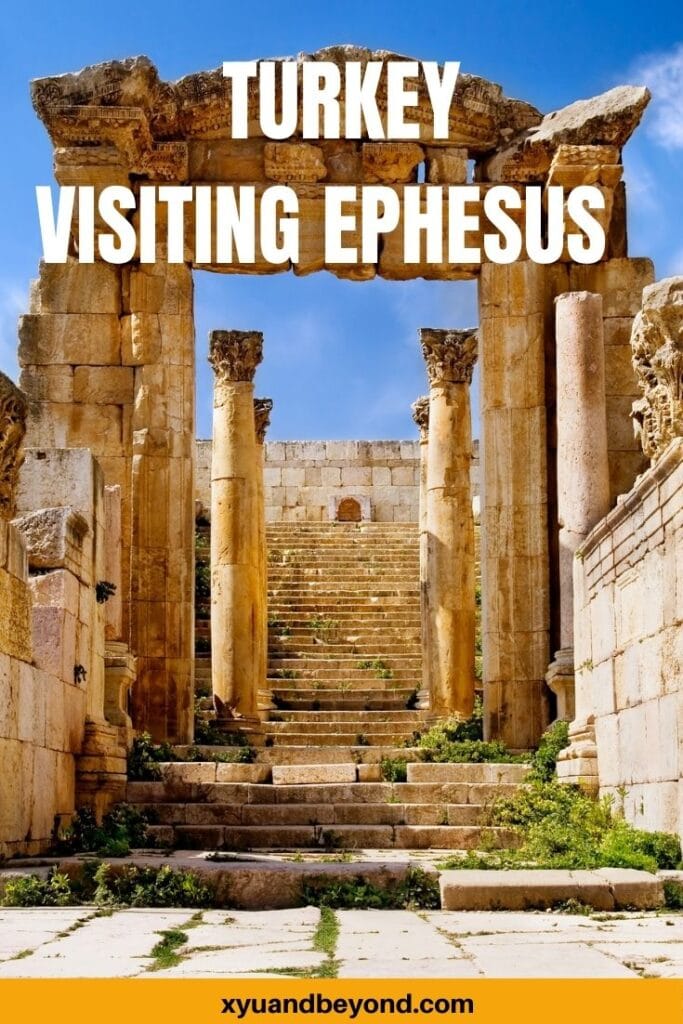The Ultimate Guide to Visiting Ephesus
Ancient Ephesus or Efes was the capital of Roman Asia Minor, and today it is the most impressive Classical site in Europe. With this guide to visiting Ephesus, you will be able to see all the major sites and enjoy them all with our best tips for visiting Ephesus.
We took a cruise to Kusadasi which is about 25 minutes to Ephesus and I wish we had more time to spend in this glorious seaside resort. We booked a private tour of the Ephesus archaeological site which was the perfect way to see this ancient city.
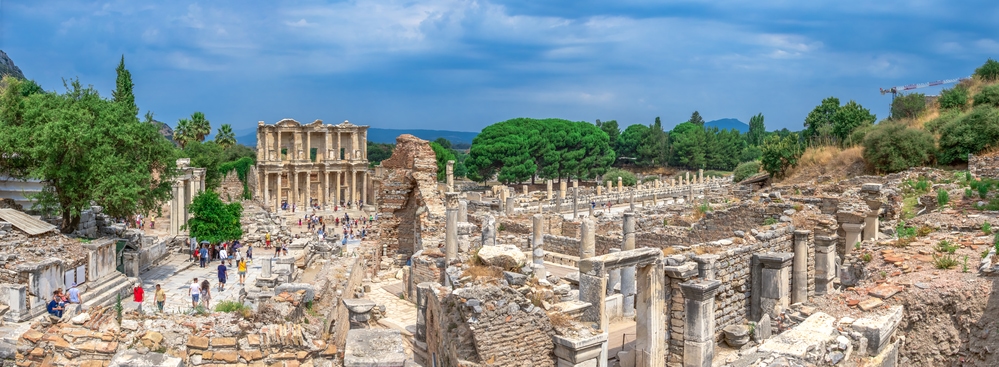
Where is Ephesus?
Ephesus is an ancient city founded on the coast of what has become modern Turkey in around 3000 B.C. On the Royal Route of trade to the east and a prominent religious centre for both Pagan and Christian religions, it is one of the greatest cities in history.
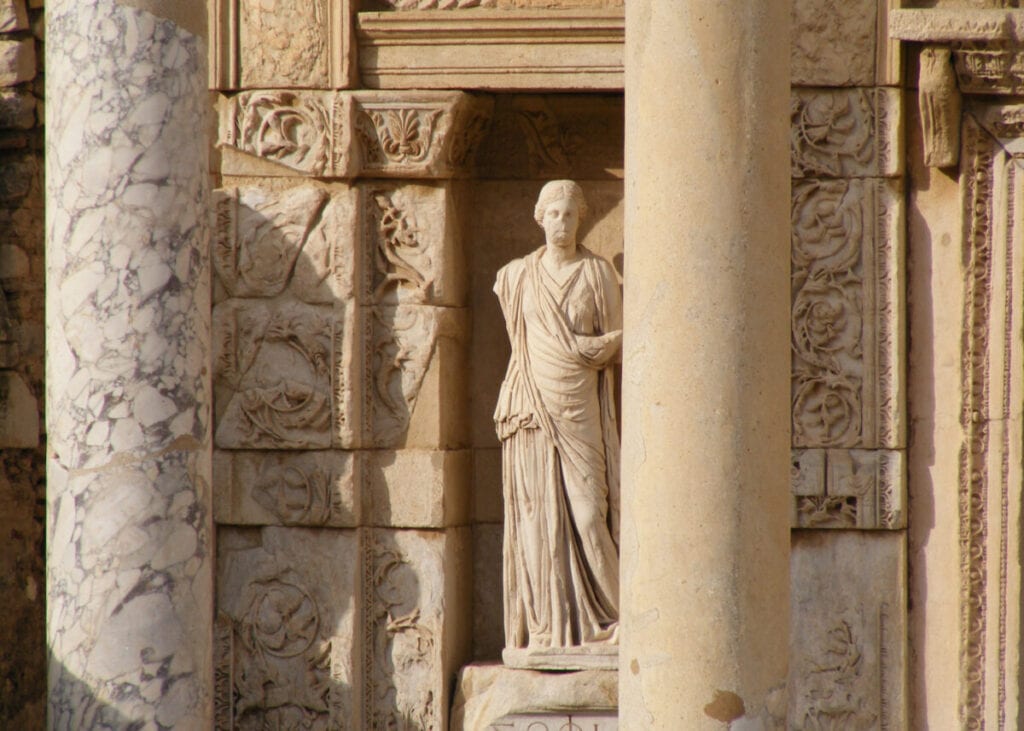
Today the modern name of Ephesus is Selcuk. A small Turkish town which has a population of 36.000 people and is located in Izmir Province, Western Turkey.
On our way to Ephesus, we were lucky to stop at several places to buy some outstanding Turkish souvenirs. We stopped at a Turkish rug shop where we saw the rugs being hand-made, and also a Turkish leather store with some stunning leather garments and even a fashion show and we had to take home some soft as-butter leather jackets for the boys.
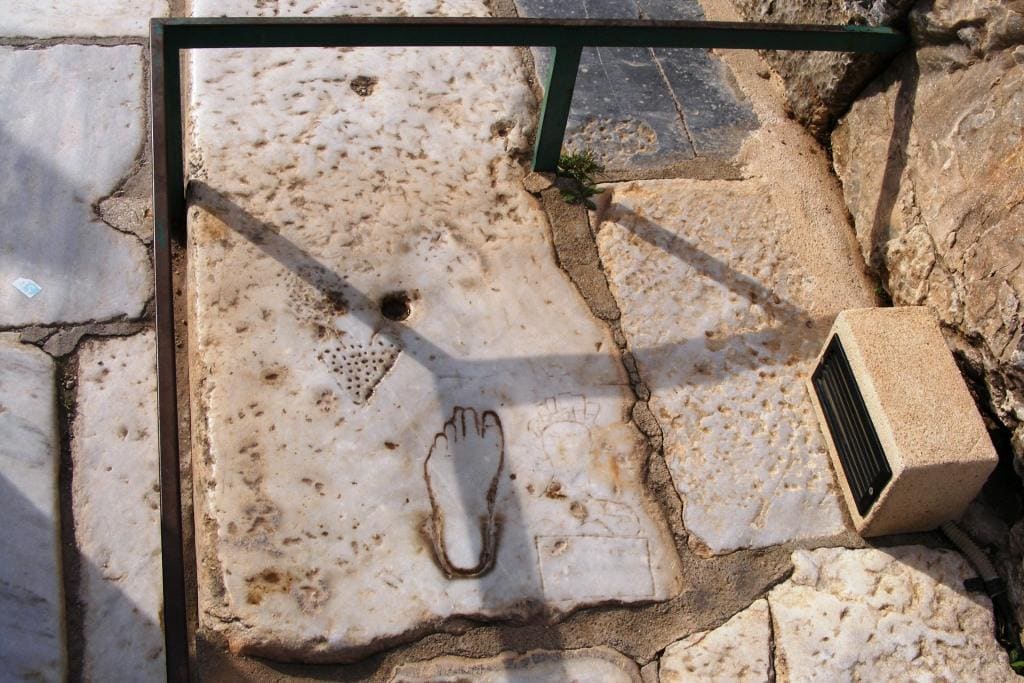
How to visit Ephesus
This is an absolutely huge and impressive site and it can be a bit overwhelming. We took a cruise to Izmir which was amazing and then took a private tour of the site with 6 others from the cruise ship. The tour guide was fantastic and he started our tour at the Lower Gate which is usually the exit area for the tour buses, so we managed to see most of the site without being overwhelmed by other tourists.
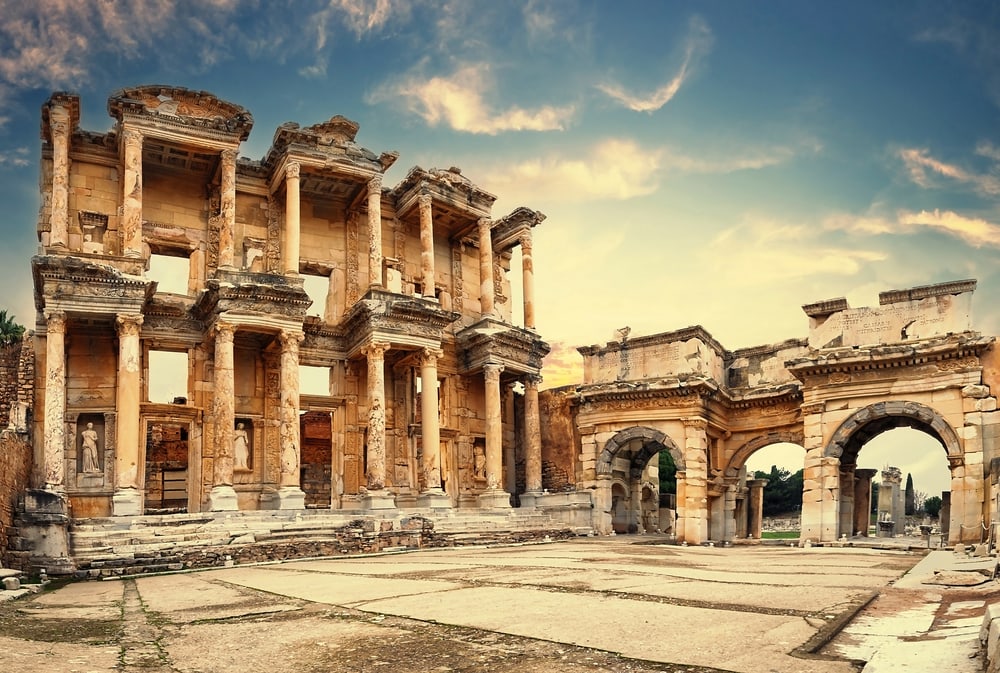
Parking at Ephesus
There are two entrance gates to Ephesus the Lower Gate which is the one we took is the nearest to Selcuk village and has a huge parking lot available for tour buses and taxis and those that drive to the site. The Upper Gate is usually where the tourist buses drop off the visitors and then move to park by the Lower Gate.
We actually took a cruise to Izmir and then hired a private guide to take us to Ephesus but you can travel to Ephesus from Izmir by train or bus. This was a considerably cheaper way to visit Ephesus rather than booking the cruise tours. As a bonus along the way, we got to visit the Temple of Artemis and go on to see Mary’s house in the hills of Turkey.
Starting at the Lower Gate this was how we managed to avoid the huge crowds. Given that it is a sort of uphill climb the Lower Gate is still an easy walk particularly if you arrive early morning and even later in the day. There are paid audio guides available at both entrances and they are available in many languages.
History of Ephesus
Ephesus was one of many Ionian cities built by the Greeks during the 2nd century BC on a hill known as the Ayasuluk Hill. Ephesus was the fourth largest city in the eastern Roman Empire, famous for its Artemesium, the Library of Celsus and its medical school.
The Greek city wall, which was erected under King Lysimachus and at least 9 kilometres long, was built in 3C BC. Today more than 3 kilometres of it is extremely well preserved on the Bulbuldag and can be seen on the way to the House of the Virgin Mary.
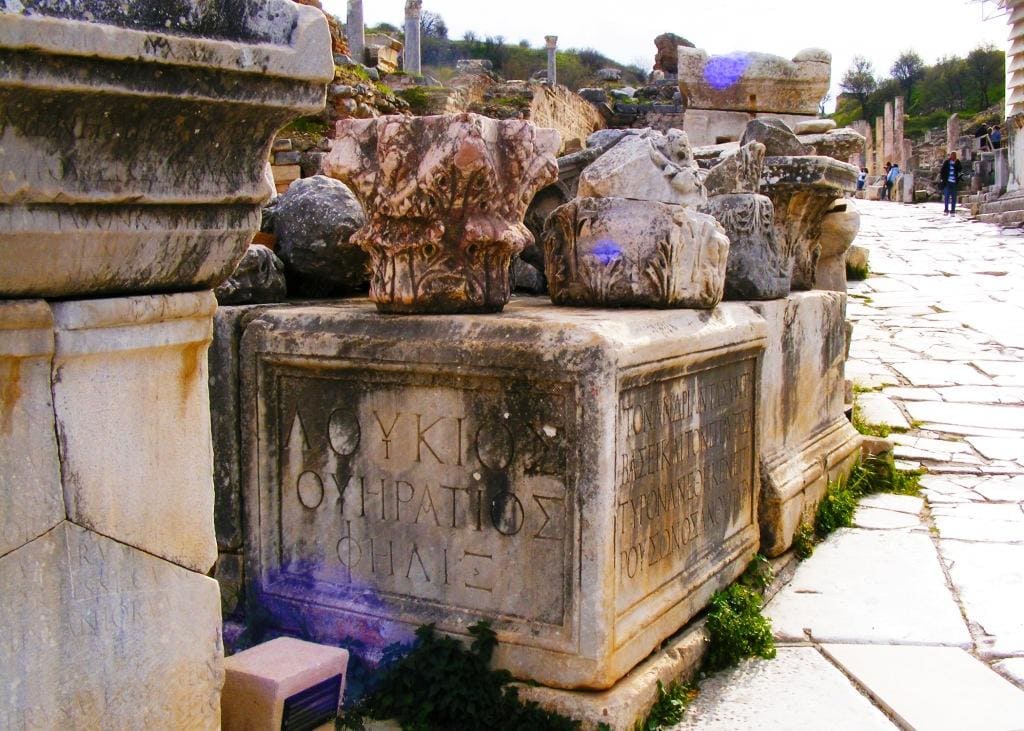
After the defeat of Antiochus the Great, king of Syria, by the Romans in 189 BCE, Ephesus was handed over by the conquerors to the king of Pergamum. Attalus III of Pergamum bequeathed Ephesus with the rest of his possessions to the Roman people (133 BCE). Thenceforth, Ephesus remained subject to Rome, except for a brief time beginning in 88 BCE.
During Roman rule, the Christian church was gaining converts and according to local belief, Ephesus was the last home of the Virgin.
The Goths destroyed both city and temple in 262 CE, and neither ever recovered its former splendour. The emperor Constantine, however, erected a new public bath, and Arcadius rebuilt at a higher level the street from the theatre to the harbour, named after him, the Arkadiane. A general council of the church, held at Ephesus in 431 in the great double church of St. Mary, condemned Nestorius and justified the cult of the Virgin as Theotokos (Mother of God).
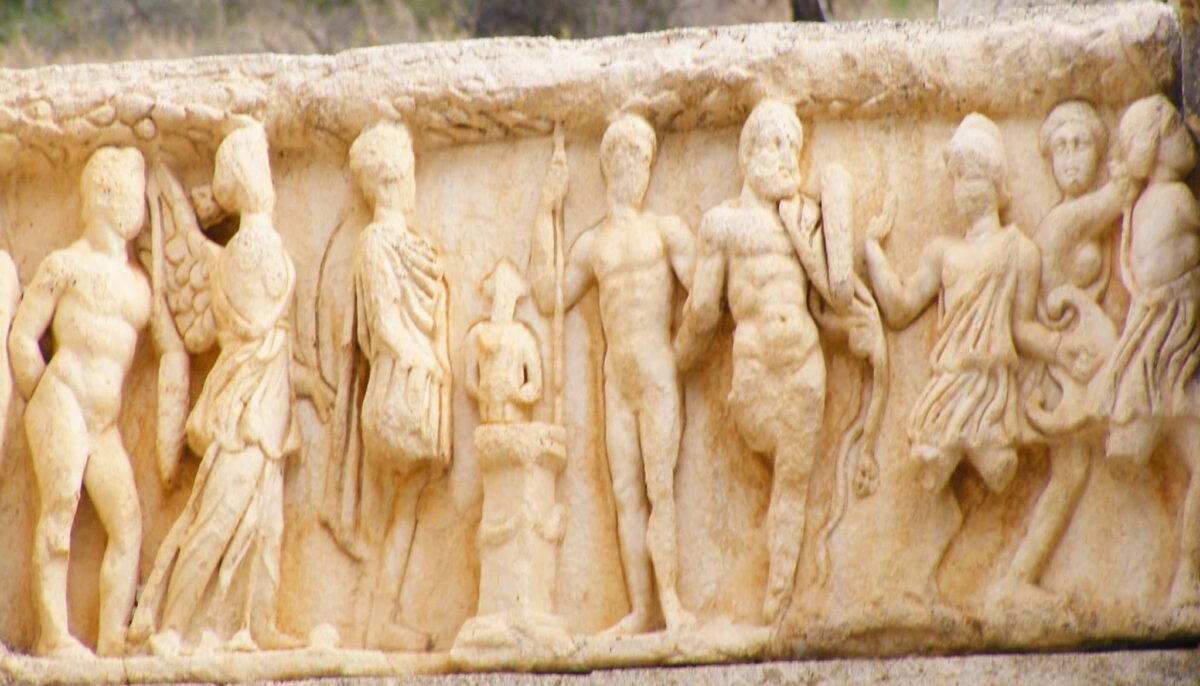
What to see when visiting Ephesus Turkey
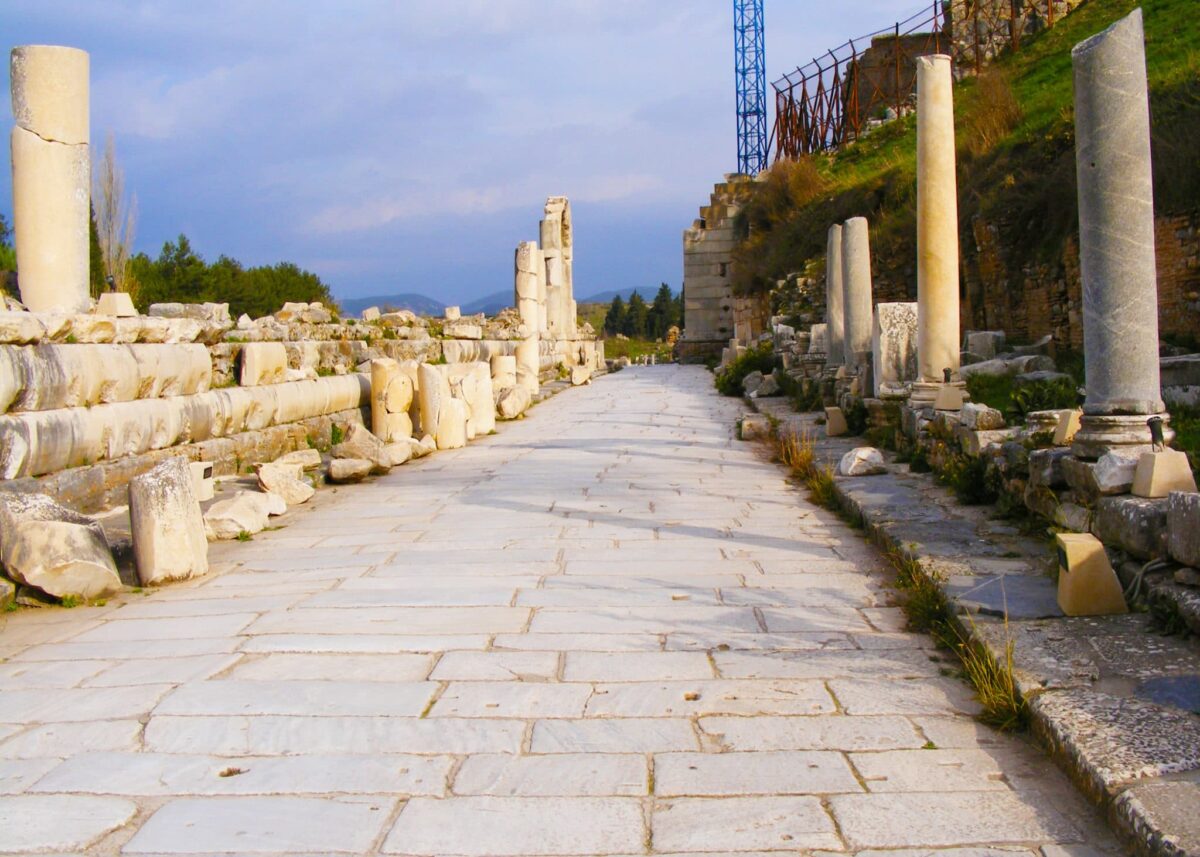
It was claimed by ancient writers that Ephesus was founded by the Amazons under their Queen Hippolyta at that time the location was right on the Aegean Sea around the 3rd to the 5th millennia. The initial location of Ephesus was a river bend that eventually became a full harbour near the mouth of the Kayster (Cayster) River.
The river frequently silted up over the years and became removed by around 5-6 kilometres from the sea. The silting did, however, create an incredibly fertile valley for current-day farming. Walking the marble road of Ephesus you are literally walking in the footsteps of Antony, Cleopatra and Caesar.
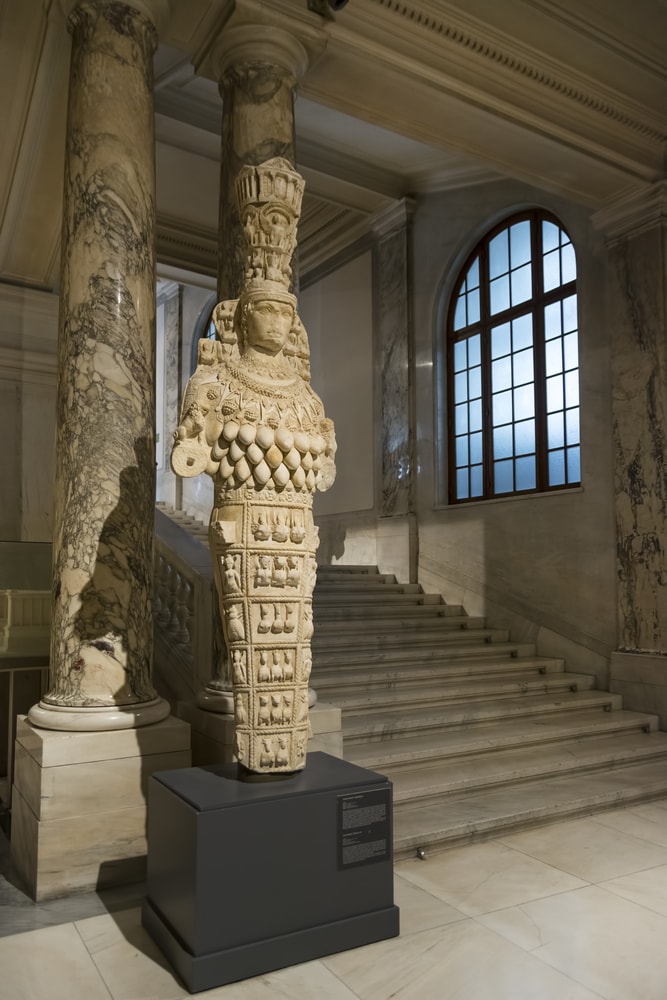
On your way to the site of Ephesus, you will pass the Temple of Artemis. These days this is not much more than a total ruin but still, it used to be one of the 7 Wonders of the World. This was believed to have been rebuilt over 7 times according to Pliny. Originally the Mother Goddess (Kybele) cult was assimilated with the newly arrived Greeks who made up a new cult with their goddess Artemis.
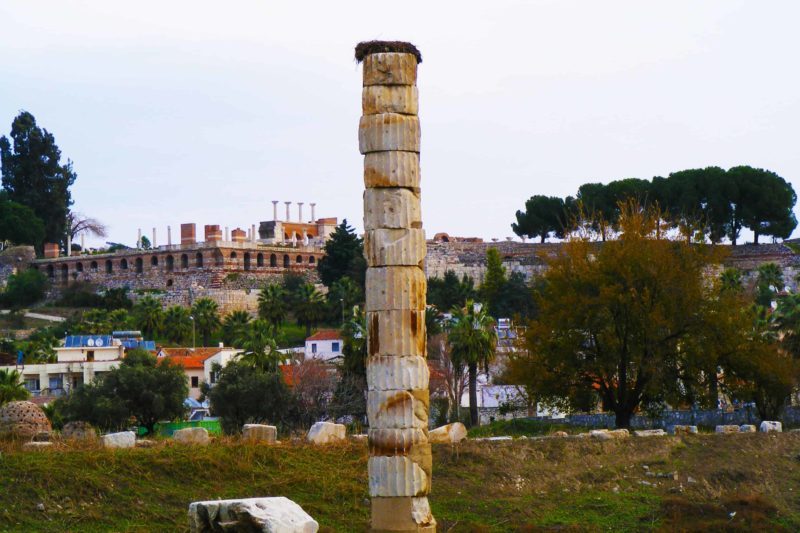
A temple was built by Croesus which was completed by 430 B.C. However, the magnificent building was burnt down by a lunatic who wanted to be famous, the temple burned the night Alexander the Great was born. The site is still visited to this day but much of the materials that went into the building of the great temple have been used in other monuments which are visible from the site.
Ephesus became a UNESCO World Heritage site in 2015 and you can learn more about these World Heritage Sites here on the blog Anything-Everywhere.
Around 10 BC Androclos was searching for a new location in which to site the city of Ephesus. Because of the man-made harbour and the flow of the river, backwashes caused the harbour to frequently silt up. It was written Emperor Hadrian cleared the harbour and when this was finished Ephesus was in a location that justified a great seaport.
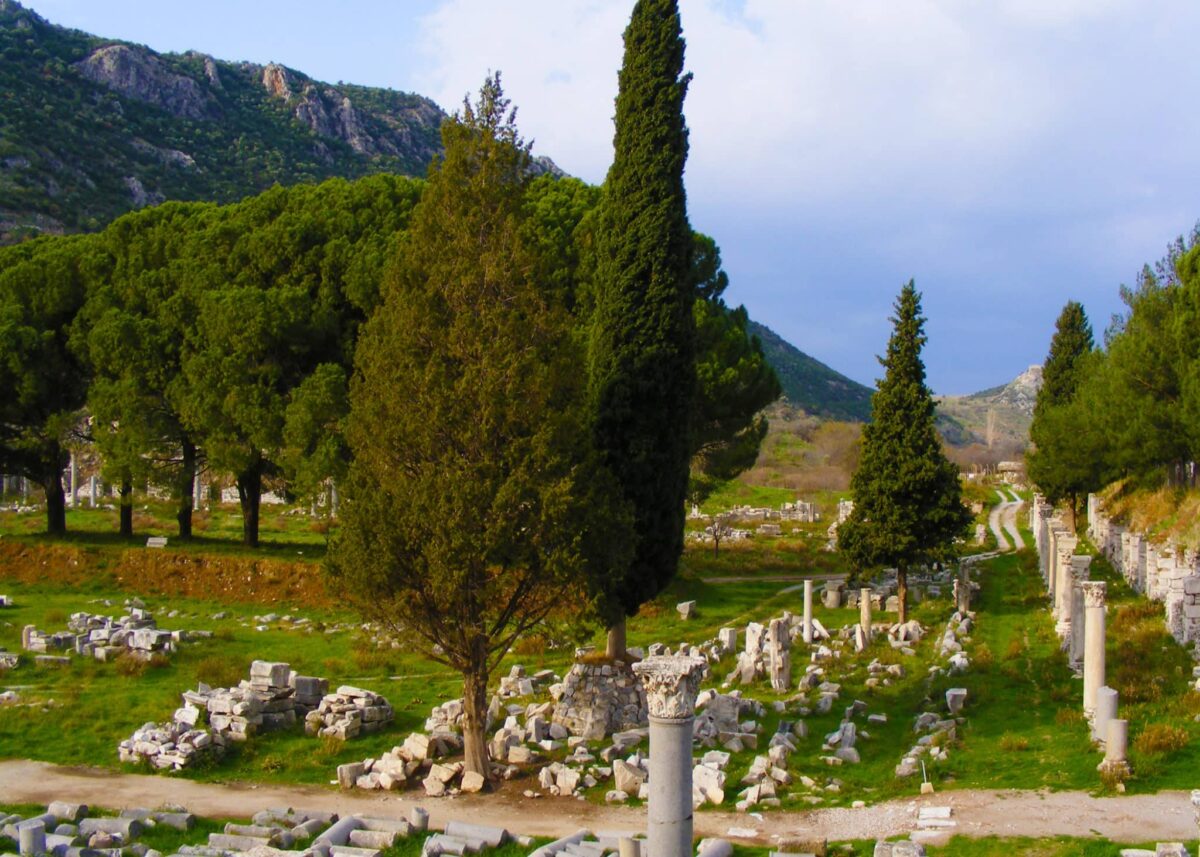
The city sat at the convergence of three land routes, going East, North East and North with a shipping lane from the north. It became a magnet for citizens from all over the known world. At its height, Ephesus was calculated to have around 250,000 citizens which put it around the 4th largest city in the World.
It became over time a magnificent City with its Marble Road, which was known as the Sacred Way and must have been a splendid place to live. Archaeologists have been excavating Ephesus for the last 140 years when a search for Artemis Temple was undertaken. The site spreads over approximately 12 kilometres only a 10th of which has currently been excavated.
Imagine wandering a place that Alexander the Great visited along with Cleopatra and Antony and St. Paul attempting to convert the people to Christianity.
The Highlights of visiting Ephesus Turkey
Curetes Street – the Marble Road
The Roman influence at Ephesus is the most apparent. With its Roman Baths, public W.C.’s with a full sewer system, the Library of Celsus, Basilica, and Odeon that seated 1400 spectators and a great theatre that seated 25,000 the ruins at Ephesus are an incredible step back in time. Walk the Sacred Way that Antony and Cleopatra strode on. The white marble road has been pieced back together over the past 100 years and remains a stunning reminder of the glory of this ancient site.
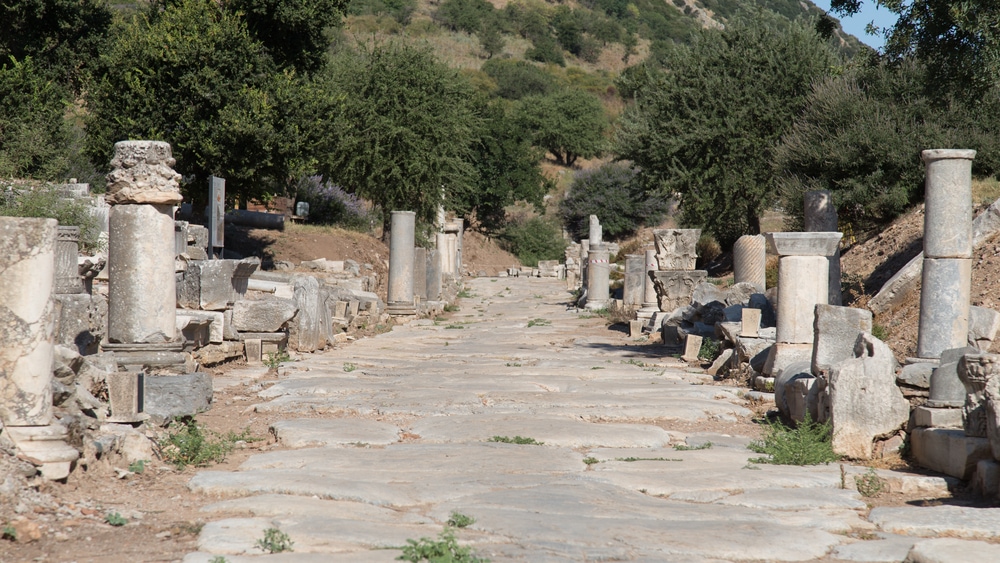
Curetes Street was one of the main thoroughfares in Ephesus and it was lined with columns and paved in white marble with shops, statues and monuments on each side and became known as the Marble Road. Curetes Street was used for ceremonies to honour the Greek Goddess Artemis. The Marble road leads to Hadrian’s Gate and connects the Celsus Library to the theatre.
Public Latrines
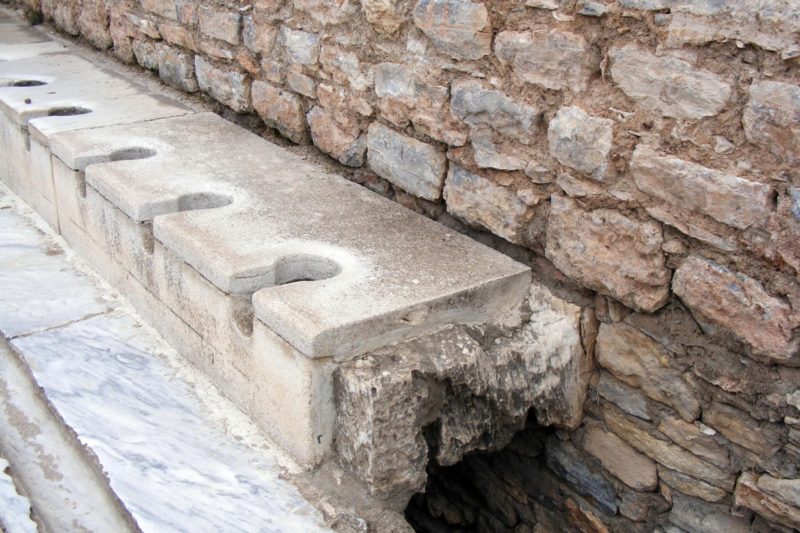
These latrines were public and a small fee was charged to use them. They were a part of the Scholastica Baths and they were located right beside the Temple of Hadrian. The toilets surrounded a pool and the structure had a wooden ceiling. Freshwater flowed through the gutters in front of the toilets to keep things “fresh” and clean.
The Arcadian Way
The Arkadiane was built to impress visitors to the great city of Ephesus. A collonaded marble road connected the harbour and the theatre. It was built like a Greek City during the Hellenistic period and was a 530m long street that had 50 streetlights, shops and galleries.
The Arcadian Way was used as a ceremony road. It links the famous Royal Route to the sea and runs around 500 metres with galleries and shops on either side the full length of the road.
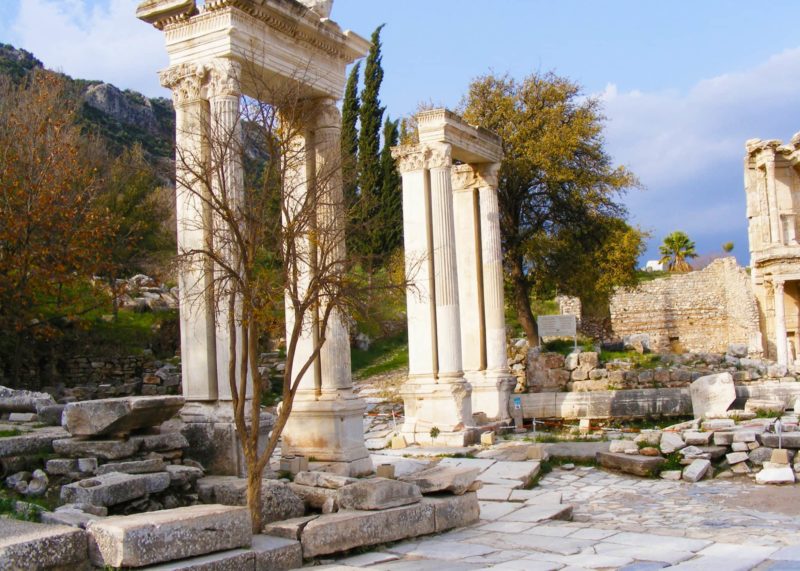
When visiting Ephesus it is on Marble Road that you will see what is believed to be the oldest advertisement in history. The distinct imprint of a foot leads the way to a private house which was a hidden brothel. There is a cross, a woman, a heart, a library and a hole interesting ad no? There are lots of different interpretations of these images but you can pretty much guess the meanings.
The Church of Mary
Early Christianity at Ephesus can be seen in the Church of Mary which is an ancient Christian Cathedral that was also known as the Church of the councils. It was called this because there were 2 religious councils of great importance held here.
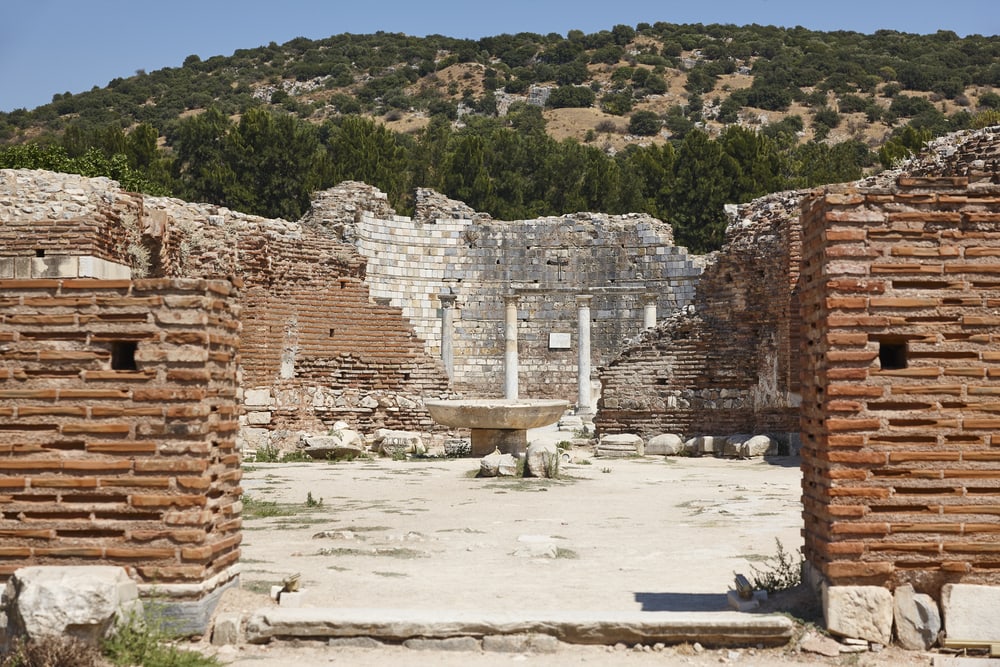
It is believed that the church was built on the ruins of an earlier Roman basilica that had been abandoned around the 3rd century, known as the “Hall of the Muses”. Around 500, the church was expanded into a monumental cathedral, whose apse and pillars partially still stand today on the site.
Make sure your guide and tour bus takes you to see Mary’s House up in the mountains near Ephesus.
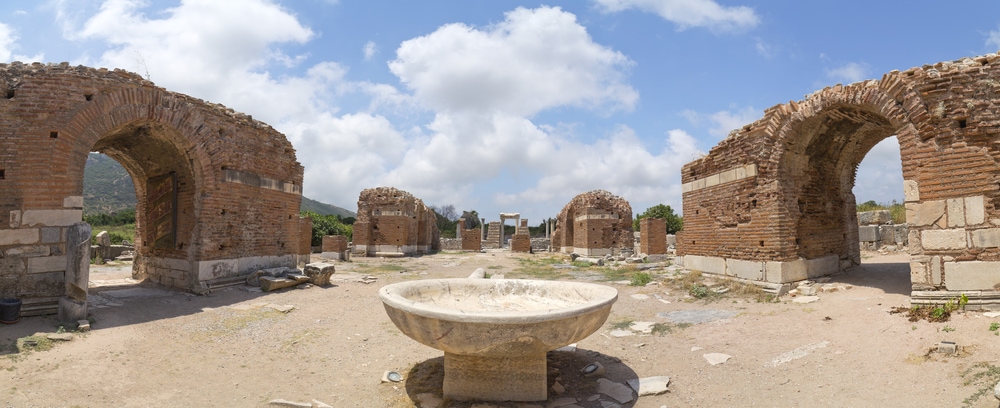
Celsus Library
This is the most iconic photographic image taken at Ephesus and the one most associated with Turkey. The Celsus Library was the third largest library in the ancient world, and it held up to 15.000 scrolls. The library building itself sits on top of Celsus’s grave or sarcophagus which lies in the crypt below the building. The statues which can be seen in the various niches at the front of the library symbolize the “virtues” of Celsus and they are Valor, Wisdom, Knowledge, and Intelligence.
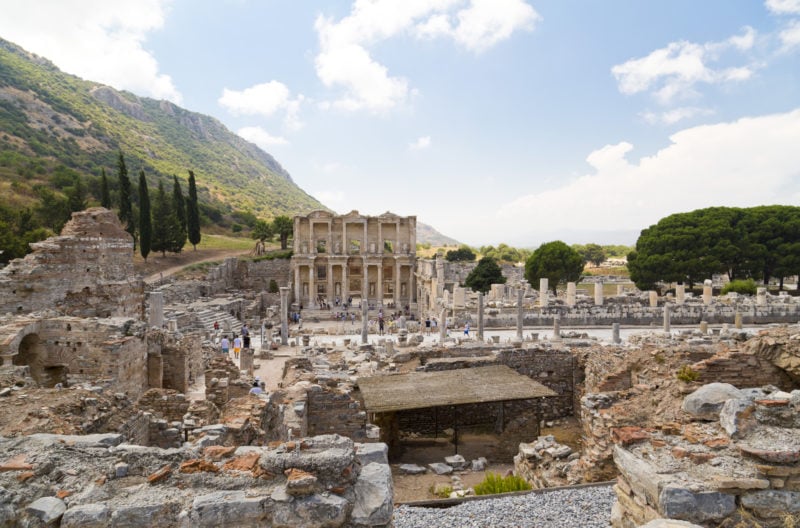
The Library of Celsus was cunningly built and designed to look far grander than its narrow lot would allow for. The double walls of the library were built to ensure good temperature control to preserve the scrolls. The walls and floors were faced with coloured marble and the lavish use of decorative wall friezes and ora.

The Terrace Houses
To visit the Terraced houses you do have to pay an extra entry fee. The houses are kept protected underneath a tented roof and many visitors to the site miss them as they are not on most regular tours. With their intricate mosaic floors that are as bright today as when they were first installed.
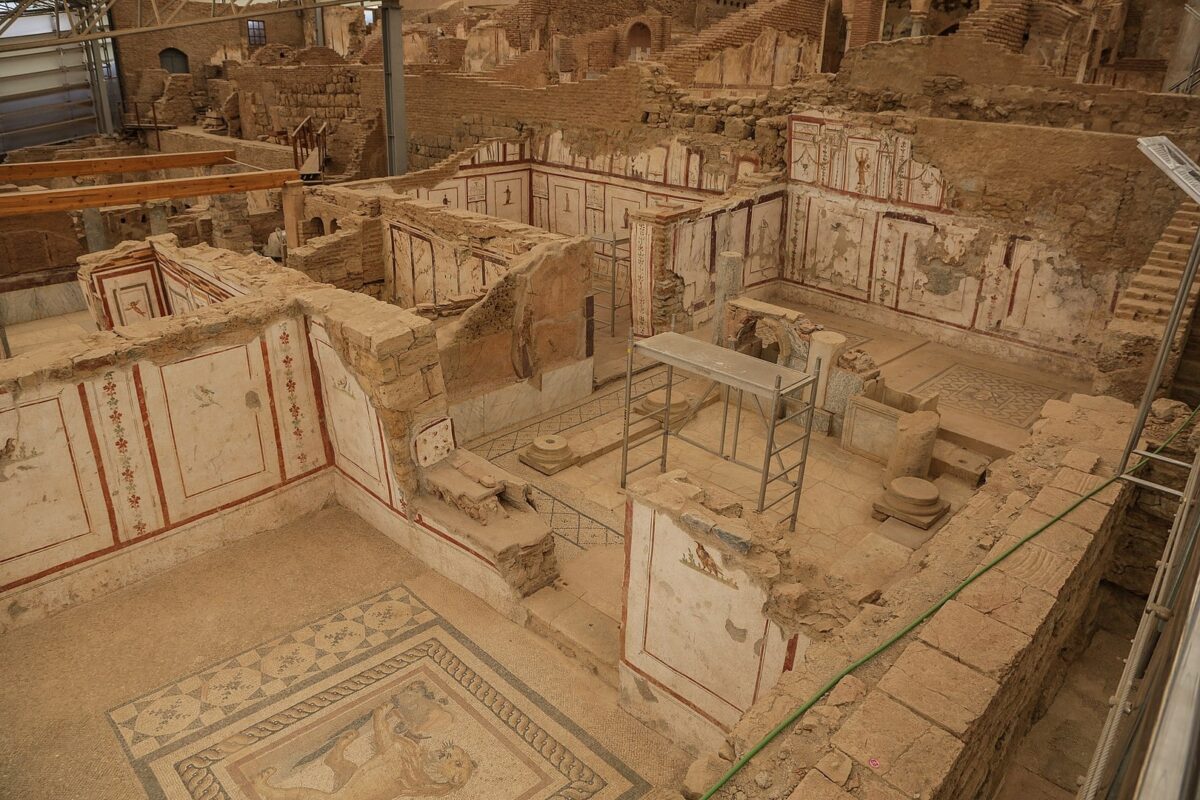
These houses were built during the Roman Period, with the oldest one dating back to 1 BC. The houses had hot and cold water and even a heating system using clay pipes. There are 6 houses that are built over 3 terraces and excavations started on them around 1961.
The Odeon
Seat yourself in the Theatre and just feel the presence of those ancient people. Imagine looking out over to the Aegean Sea and in your view was one of the most glorious sites in the entire ancient world.
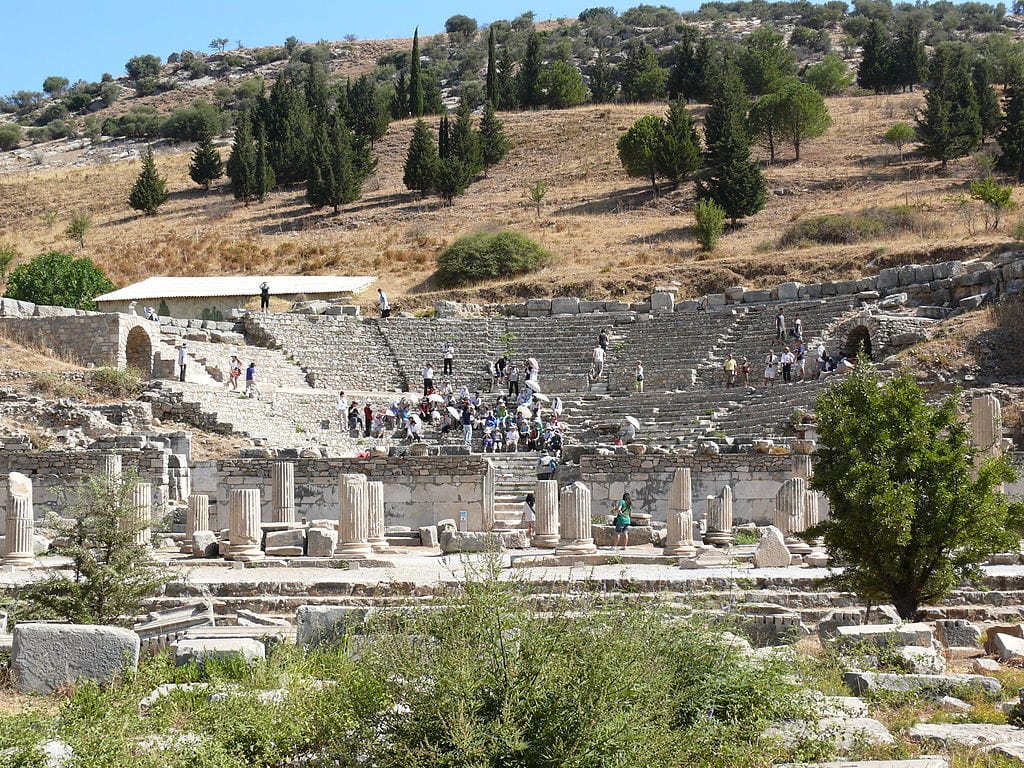
It had a capacity of 1500 spectators. It had 3 doors opening from the stage to the podium. The podium was narrow and one meter higher than the orchestra section. The stage building was two-storeyed and embellished with columns.
The Great Theatre
The Great Theatre was built upon the Odeon and is the most magnificent building at Ephesus is the Great Theatre. First built in the Hellenistic period which was the 3rd century BC. It was enlarged by the Romans and those are the ruins you see today.
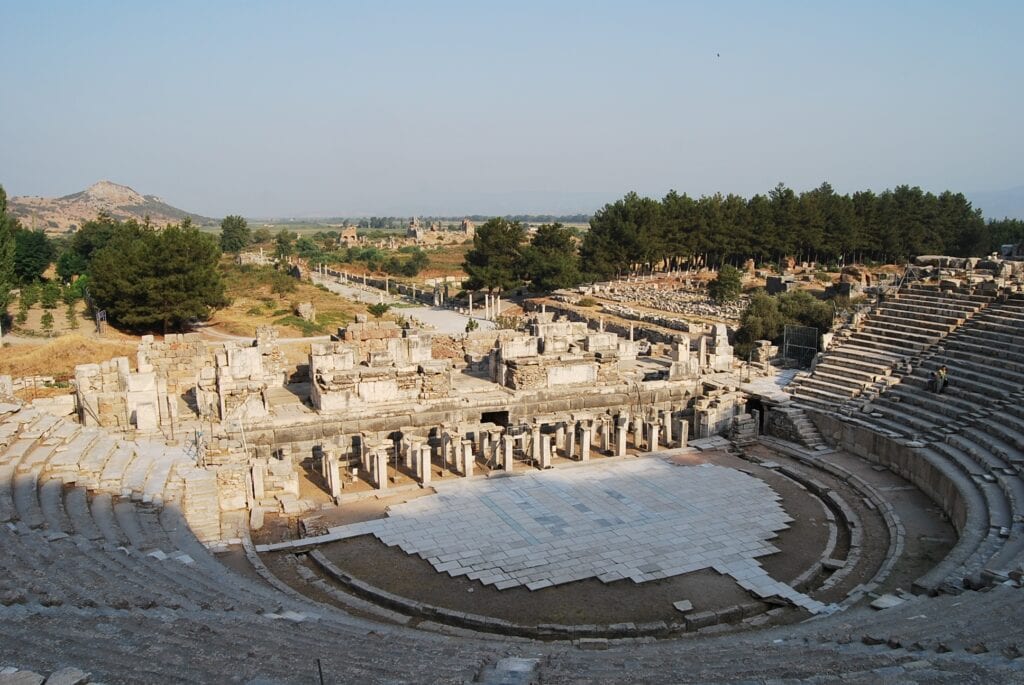
This theatre could seat over 25,000 people. There are three sections of seats during excavations marble pieces were found that were used as the backs of some seats reserved for the important folks and of course the Emperor’s Box. In the lower section, Marble pieces, used for restoration, and the Emperor’s Box were found. The seats with backs, made of marble, were reserved for important people.
Basilica of St. John and the Baptistry
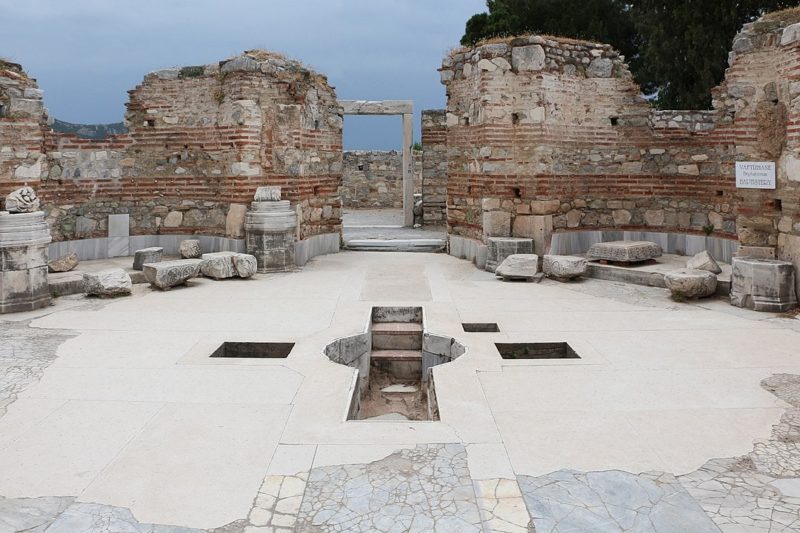
When Christianity became the official religion of Rome this building was turned into a basilica and it was the first church dedicated to the Virgin Mary. Within the Basilica ruins, you will see the best-preserved baptistry in Asia Minor.

Up in the mountains near Ephesus, you can also visit the ancient site of what is considered the Virgin Mary’s home.
Admission Fees / Entry Ticket Costs for Ephesus and the nearby Attractions
| What is the entrance fee for Ephesus? Entry ticket costs (Admission fees) for Ephesus and nearby attractions are as follows: Ephesus: 10 Euro per person (200 TL)House of Mary: 10 Euro p.p. (200 TL)Temple of Artemis: Free of ChargeSt. John’s Basilica: 2.5 Euro p.p.(50 TL)Sirince Village: Free of charges Bey Mosque: Free of ChargeTerrace Houses: 4.5 Euro p.p. (85 TL)Ephesus Museum: 2.5 Euro p.p.(50 TL) |
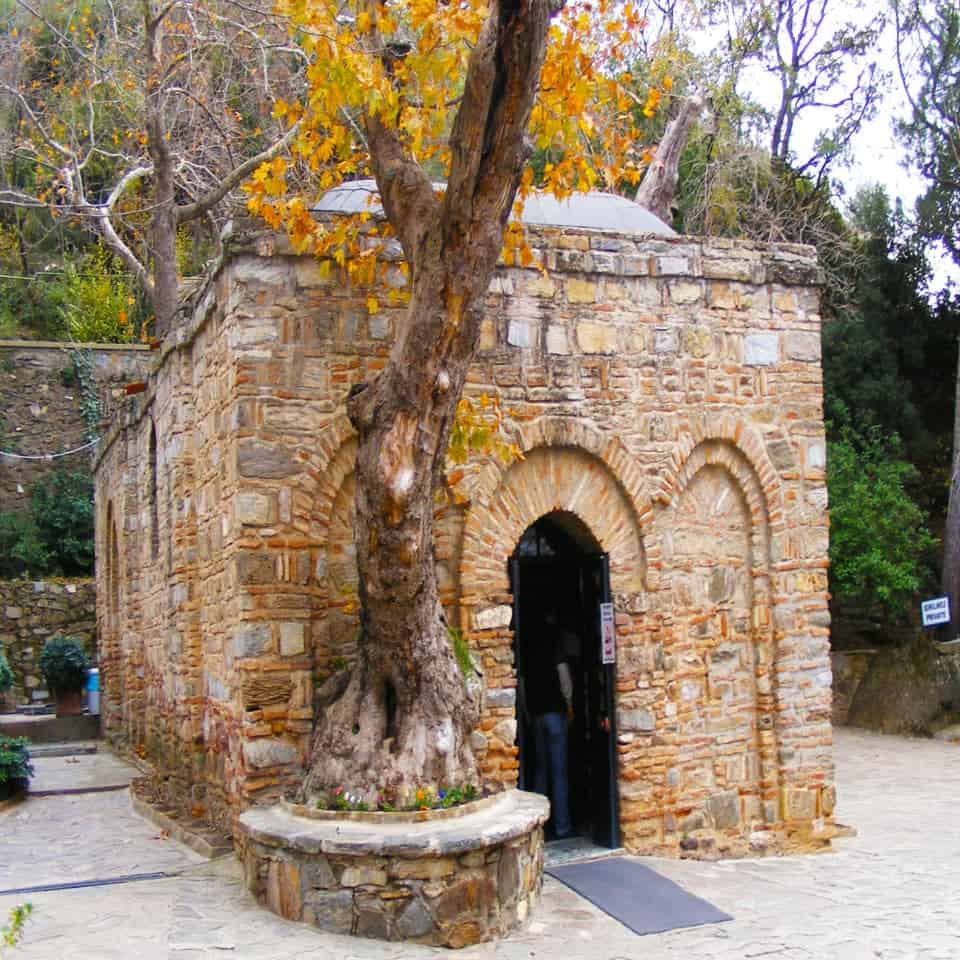
Today you can find many of the archaic remains from Ephesus in the British Museum in London.
Turkey is a mecca for shopping, and the bazaars and souks are irresistible. I came home with gorgeous leather jackets, spices and a ton of stuff. If you really want to learn what to buy when you visit Turkey I suggest you read Lindsay’s (at Carpe Diem Our Way) great article on What to buy in Turkey.
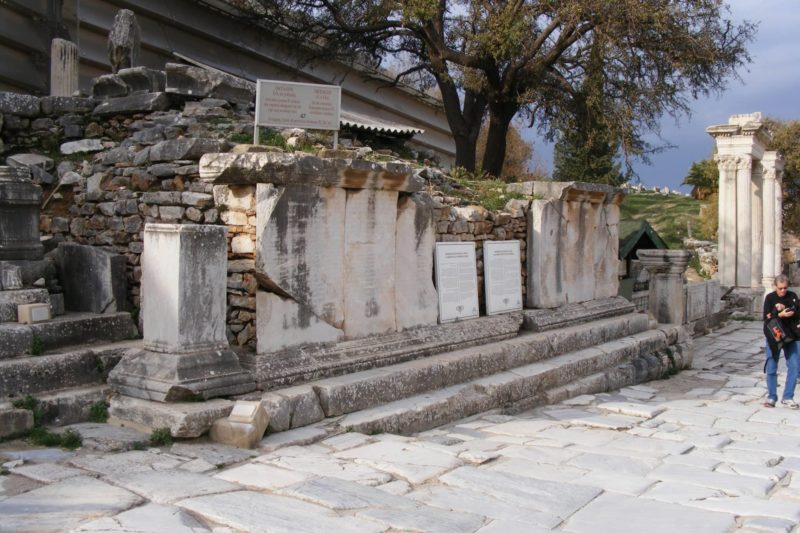
Turkey is a place that my husband and I absolutely loved and we cannot wait to get back there again. If you love Turkey and want to find some fabulous places to visit outside of Istanbul look no further than Melissa’s article on 16 Wonderful Day Trips from Istanbul. I want to explore every single one.
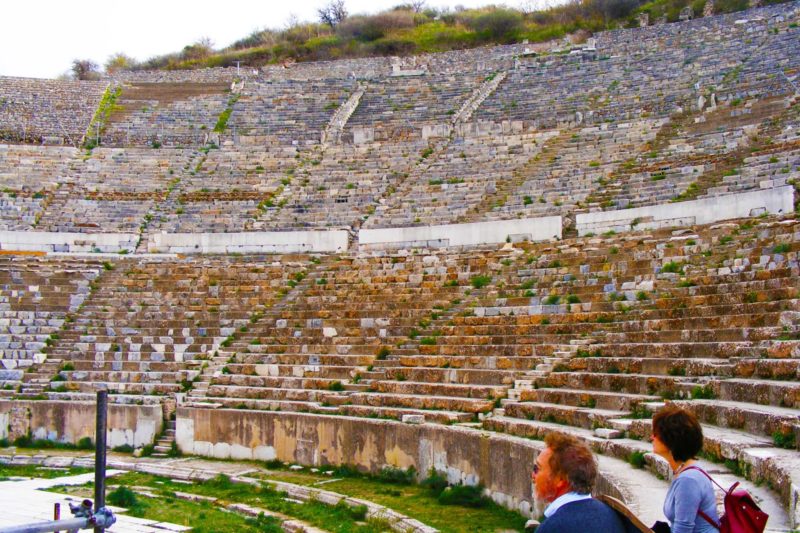
I travelled to Turkey via a Meditteranean cruise but many of my fellow writers head out from various points across Europe and in Verushka’s case South Africa, here is a great post from her blog Tips for travel to Turkey some good research about what to expect, what to pack and much more.
I have many plans to visit Turkey again I want to see Istanbul and experience the beauty of the Bosphorus and eat lots of Turkish food and drink gallons of Turkish Coffee. I want to explore the city and the bazaars, and take a look at the incredible Hagia Sophia. We missed the Isa Bey Mosque sadly. This mosque was built using some of the columns from Ephesus.
You might like
42 scrumptious heavenly Turkish foods to try
Things to do in Cappadocia in Winter
Visiting the House of Mary in Ephesus Turkey
The Sacred Temple of Artemis at Ephesus
Have you been to Turkey yet?
Pin it to save it
